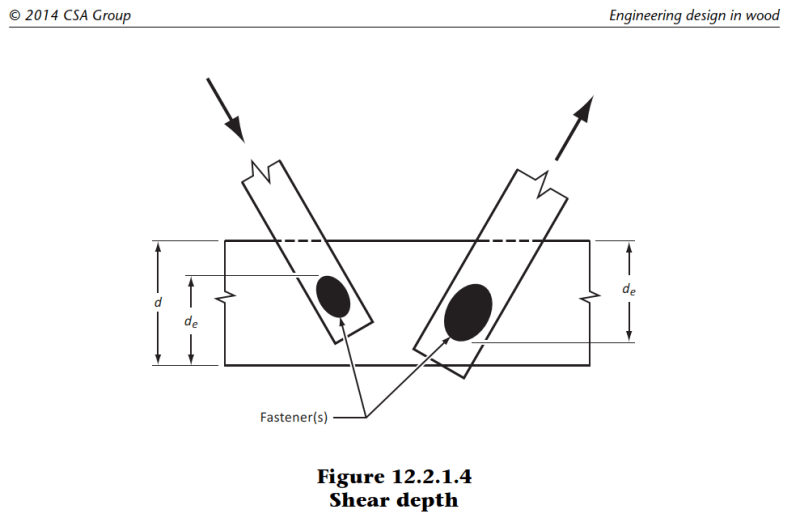In a recent thread, RontheRedNeck mentioned how hurricane ties are often installed improperly. It got me thinking about some of the ways this is done, and one jumped out at me as being as potentially bad as it is ubiquitous.
I have never seen a hurricane tie specified for any reason other than the capacity and installation geometry. So I got to thinking about this condition that I see pretty frequently:

A 2x12 rafter on a relatively low slope roof (drawn at 4/12) and a Simpson H2.5A hurricane tie 'properly' installed. This is common in attics that will be occupied so it gives the architect room for insulation. The 2.5A is the most common hurricane tie I see. But...it's located entirely below the neutral axis of the rafter. In fact, I'm not sure of any hurricane tie except those that wrap around the top edge that would not induce some amount of cross grain tension in this connection. The load table footnotes in the catalog include this:
So what do you all think about this? Do you think about it? What is your threshold for worrying about it? If all contractors were compliant and did exactly as we say without a fuss, what would you do? Since the previous question is about as far from reality as flying pink unicorns, what do/will you do?
My thought is this: Wind loads are not sufficiently sustained to cause catastrophic failure so long as the strap and the sheathing fasteners overlap. Unfortunately, that means that the length of the hurricane tie above the plate needs to be just shy of the depth of the rafter. That will get loads of push back from contractors. I do think the image I posted above is likely inadquate or, at least, doesn't meet code or the intentions of the manufacturer.
I have never seen a hurricane tie specified for any reason other than the capacity and installation geometry. So I got to thinking about this condition that I see pretty frequently:

A 2x12 rafter on a relatively low slope roof (drawn at 4/12) and a Simpson H2.5A hurricane tie 'properly' installed. This is common in attics that will be occupied so it gives the architect room for insulation. The 2.5A is the most common hurricane tie I see. But...it's located entirely below the neutral axis of the rafter. In fact, I'm not sure of any hurricane tie except those that wrap around the top edge that would not induce some amount of cross grain tension in this connection. The load table footnotes in the catalog include this:
Simpson Strong Tie Catalog said:5. When cross-grain bending or cross-grain tension cannot be avoided in the members, mechanical reinforcement to resist such forces shall be considered by the designer.
So what do you all think about this? Do you think about it? What is your threshold for worrying about it? If all contractors were compliant and did exactly as we say without a fuss, what would you do? Since the previous question is about as far from reality as flying pink unicorns, what do/will you do?
My thought is this: Wind loads are not sufficiently sustained to cause catastrophic failure so long as the strap and the sheathing fasteners overlap. Unfortunately, that means that the length of the hurricane tie above the plate needs to be just shy of the depth of the rafter. That will get loads of push back from contractors. I do think the image I posted above is likely inadquate or, at least, doesn't meet code or the intentions of the manufacturer.


